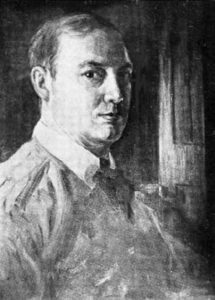JUERGENS, Alfred
 Alfred Juergens’ international training and exhibition success gave him instant credibility in the Chicago art scene. On his return to his native city in 1899, the Art Institute gave him a widely reviewed solo exhibition that was among the museum’s first for a living artist. In the course of his career, Juergens was the subject of several other solo shows in local institutions and he participated in many more group exhibitions, especially at the Art Institute. His numerous prizes included a bronze medal at the Panama-Pacific International Exposition in San Francisco in 1915.
Alfred Juergens’ international training and exhibition success gave him instant credibility in the Chicago art scene. On his return to his native city in 1899, the Art Institute gave him a widely reviewed solo exhibition that was among the museum’s first for a living artist. In the course of his career, Juergens was the subject of several other solo shows in local institutions and he participated in many more group exhibitions, especially at the Art Institute. His numerous prizes included a bronze medal at the Panama-Pacific International Exposition in San Francisco in 1915.
Juergens’ early paintings show the influence of his Munich training in their dark tones, interior settings, and themes of peasant life and portraits of rural character types. In Chicago he also painted decorative murals and formal commissioned portraits. From the beginning, however, he showed a particular penchant for landscape paintings, favoring garden-like settings that he often enlivened with figures; he also painted several scenes of downtown Chicago. Adept in both oils and watercolors, Juergens turned to the bright color, outdoor light effects, and broken brushwork associated with impressionism after a stay in Paris in the early years of the twentieth century. He painted many views in his hometown of Oak Park, where he was active in local art affairs. He made frequent excursions to paint in western Michigan, marrying a Grand Rapids native late in life. Remembered as “brilliant, tempestuous and eccentric,” Juergens was an “American Monet.”
Wendy Greenhouse, PhD
No products were found matching your selection.

